Travel: Painted Silo Art Trails, Victoria
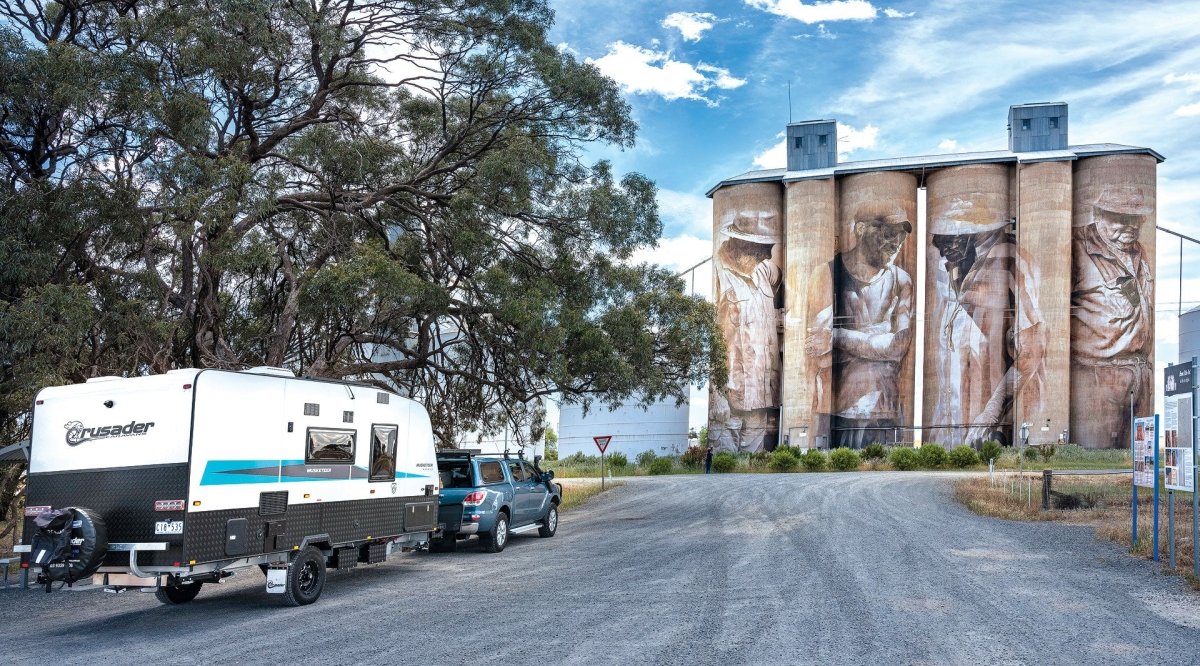
Having taken delivery of a new caravan during Melbourne’s seemingly never-ending COVID lockdown we were itching to hit the road as soon as those restrictions were lifted. But, where to go? With state borders still closed, something nearer to home was called for.
My wife had been keen to see Victoria’s painted grain silos for some time and while not ticking my usual ‘remote destination’ checkbox and , in the interest of preserving domestic bliss and harmony, we agreed the silos would make a good maiden shakedown voyage for the van.
The countryside north-west from Melbourne was lush and verdant in late spring and after the world’s longest lockdown it was a breath of fresh air (literally) as we crested the Great Dividing Range and headed towards Victoria’s Western Districts.
St Arnaud
We picked up the Silo Art Trail at St Arnaud, some 250km from Melbourne. Painted by local artist, Kyle Torney, in 2020 the work is titled ‘Hope’ and tells the story of three pioneers in this former gold mining district. ‘Hope’ by a prospector looking for the glint of gold in his pan; ‘Hope’ by his wife that she will be able to feed her family; and ‘Hope’ that their young child will prosper.
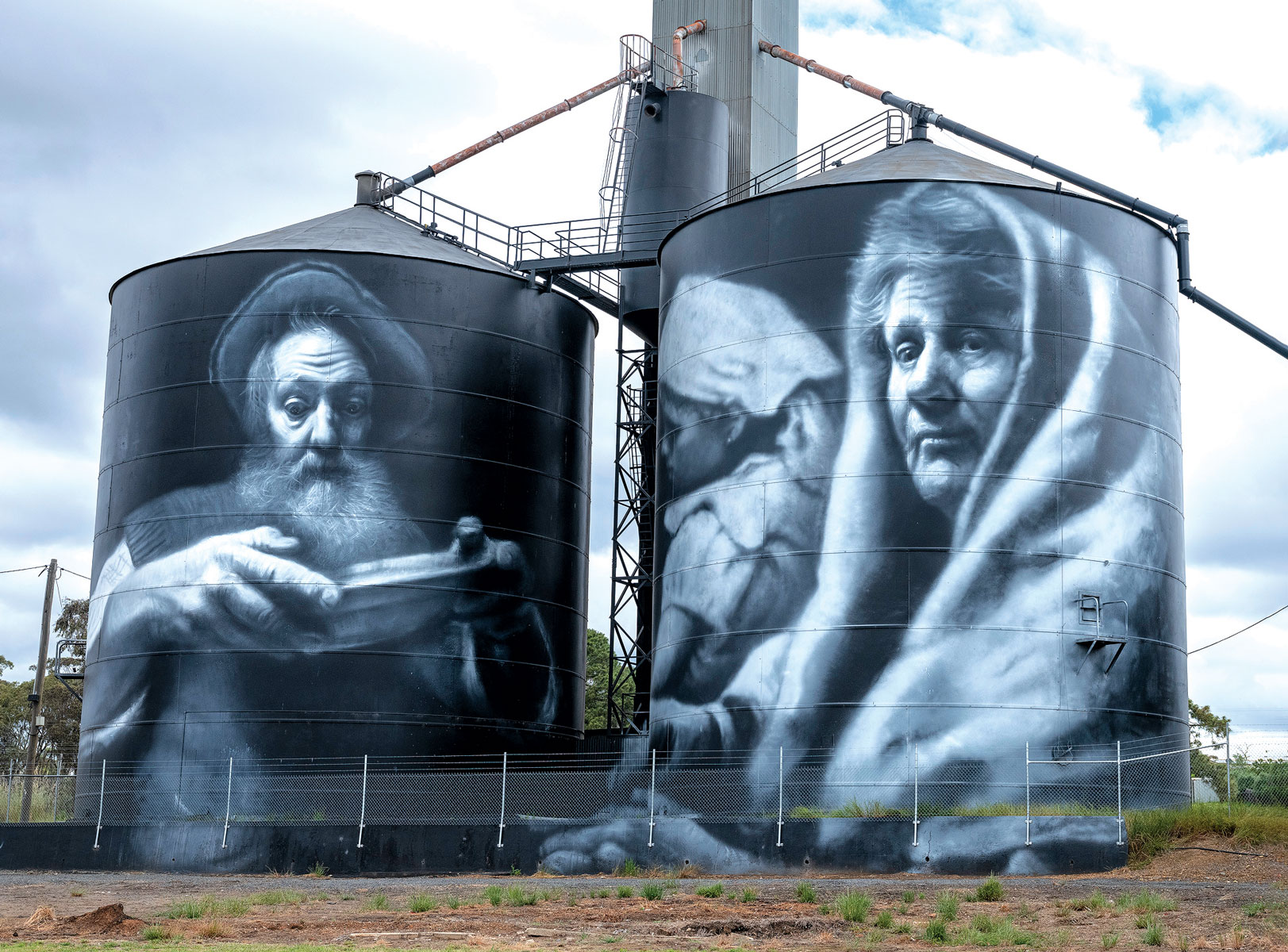
As we followed the Art Trail many of the small towns we passed through reflected the loss of businesses and population through economic and social change. Gone were the butchers, bakers, newsagents and chemists that once prospered in these small towns. However, despite their slow decline, the towns can be architecturally interesting with buildings changed little from last century.
Murtoa
Murtoa, 80kms to the west of St Arnaud, was our first overnight stop. The town’s small caravan park was clean, welcoming and delightfully located on the shores of Lake Marma whose waters cooled the evening breeze and provided pleasant relief from the otherwise warm day. Of interest to any piscators (as in fishermen, not heavy drinkers) the lake is supposedly teeming with native fish.
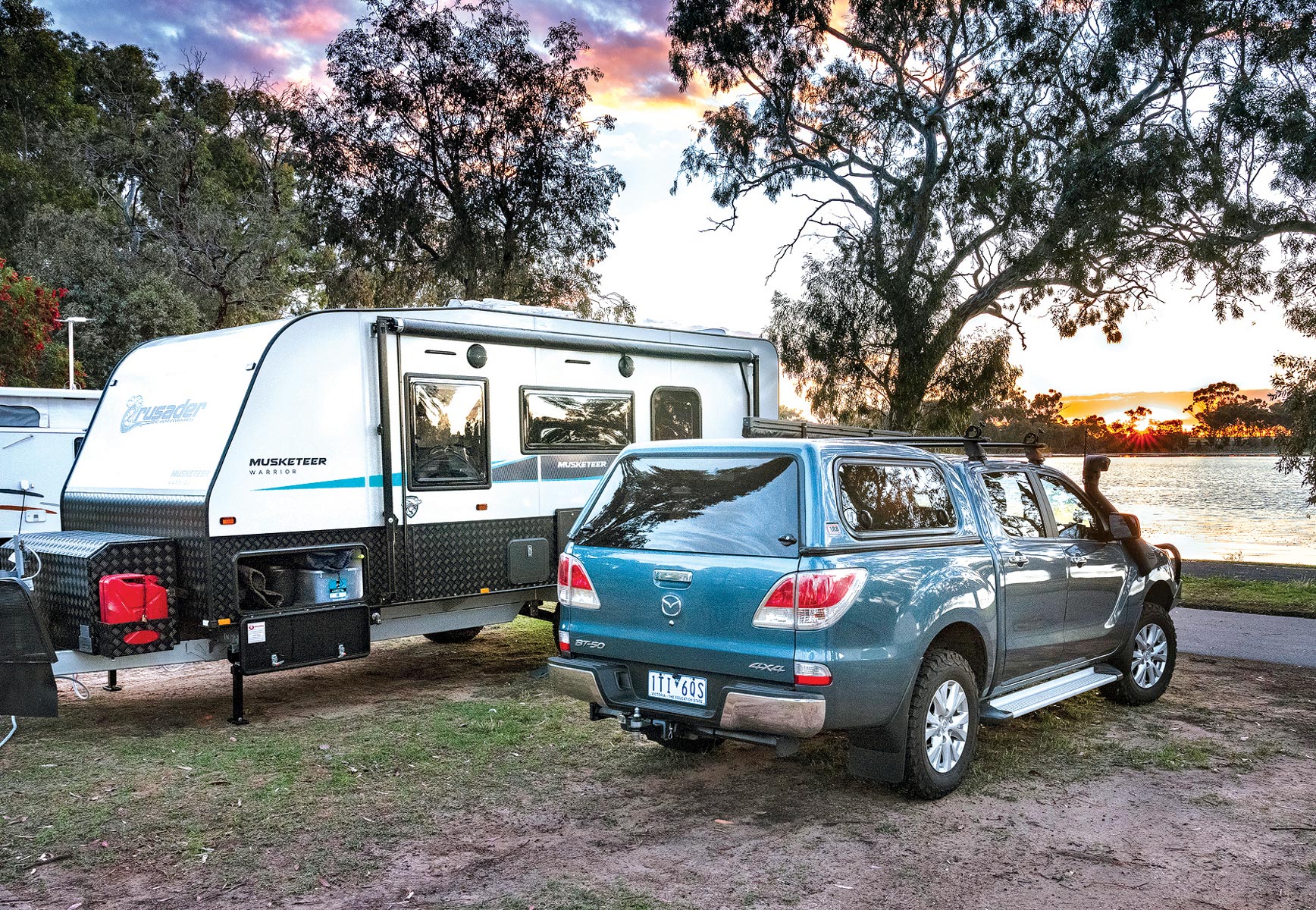
Economically, Murtoa appears to have fared better than many other small rural towns, probably due to it hosting Australia’s largest inland grain receiving terminal. One very special piece of the town’s grain handling history has survived to become a standout tourist attraction – the Stick Shed. Constructed in 1942 to stockpile grain during the Second World War, nothing really prepares you for the Stick Shed’s breathtaking cathedral-like interior. Built in only four4 months to hold nearly 100,000 tonnes of grain, at 16,000sqm it is almost the size of Melbourne’s MCG. Photographically, the shed ticks all the boxes as a top subject but it is almost impossible to capture it in a way that conveys the immensity of the structure.
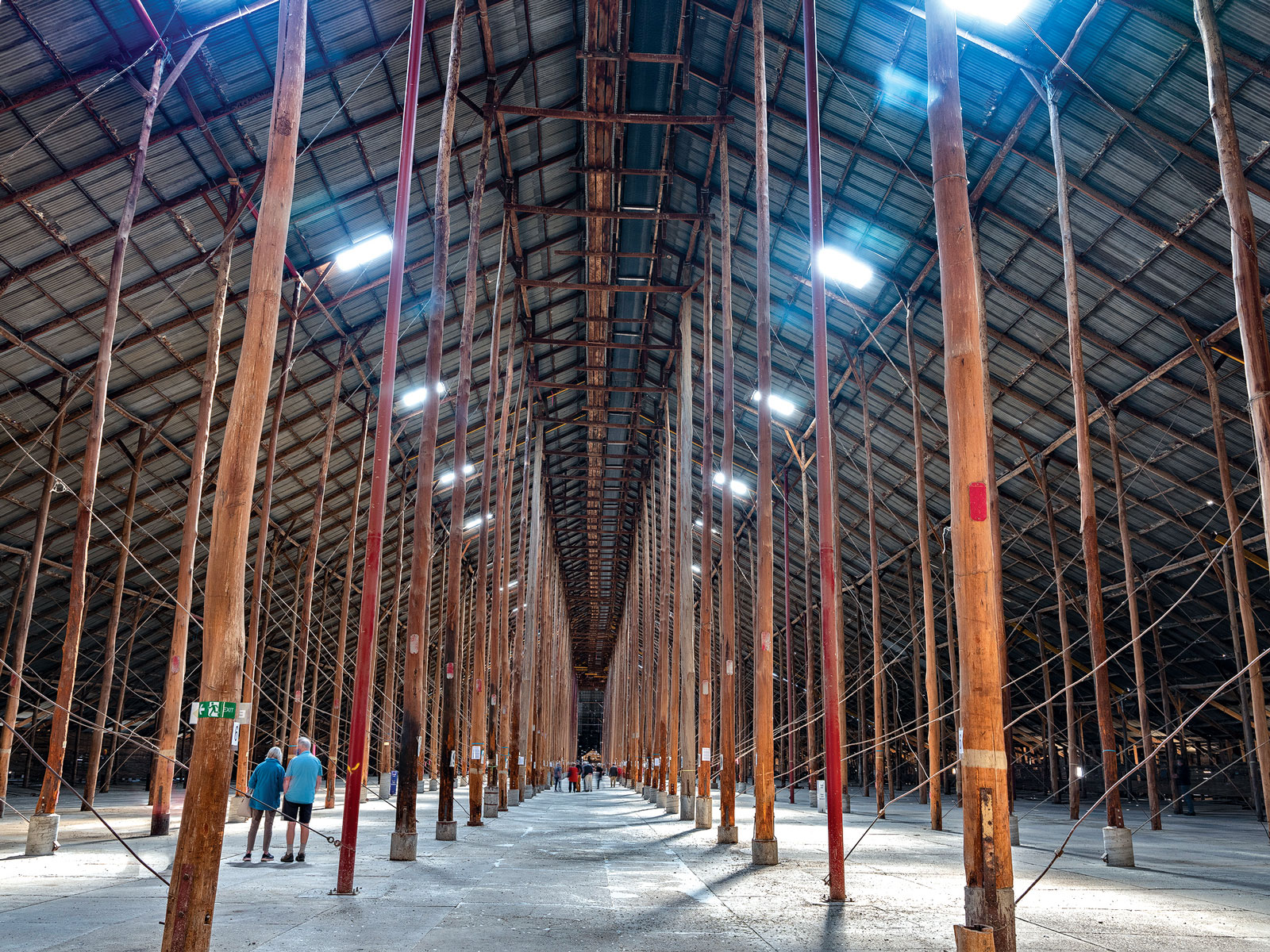
Nothing really prepares you for the Stick Shed’s breathtaking cathedral-like interior
Murtoa makes a good base to visit three painted silos on the Art Trail – Goroke, Kaniva and Rupanyup. Goroke some 100km west of Murtoa has a silo painted by Geoffrey Carran in 2020. Goroke is the local aboriginal word for magpie – so no prizes for guessing the subject of the work. Kaniva lies north from Goroke on the highway to Adelaide and Melbourne based artist, David Lee Periera, painted the silos here with a tribute to the flora and fauna of the nearby Little Desert. The work shows an Australian Hobby (a member of the Falcon family) flanked by native Sun Orchids. Finally, Rupanyup, 15kms east of Murtoa hosts a silo painted in 2017 by Russian artist Julia Volchkova portraying an insight into rural youth culture by using the portraits of a local young sportsman and sportswoman.
Minyip
Leaving Murtoa to follow the Art Trail north, we passed through nearby Minyip, noteworthy for its use as a location for the popular Flying Doctors TV series from the 1980’s and more recently for a movie, ‘The Dry’.
A couple of kms off the Minyip-Warracknabeal road is Sheep Hills, home to arguably the most striking of the painted silos. Its vibrant colours feature portraits of local indigenous Australians painted by Melbourne artist, Adnate. The work seeks to portray the strong ancestral connection between young indigenous peoples and their elders.
Brim
Continuing north, gone are the 40 acre paddocks of yesteryear, replaced by unbroken vistas of cereal crops stretching as far as the eye can see. The area has always been Victoria’s cereal bowl and catering for this abundance saw grain silos spring up along the rail network.
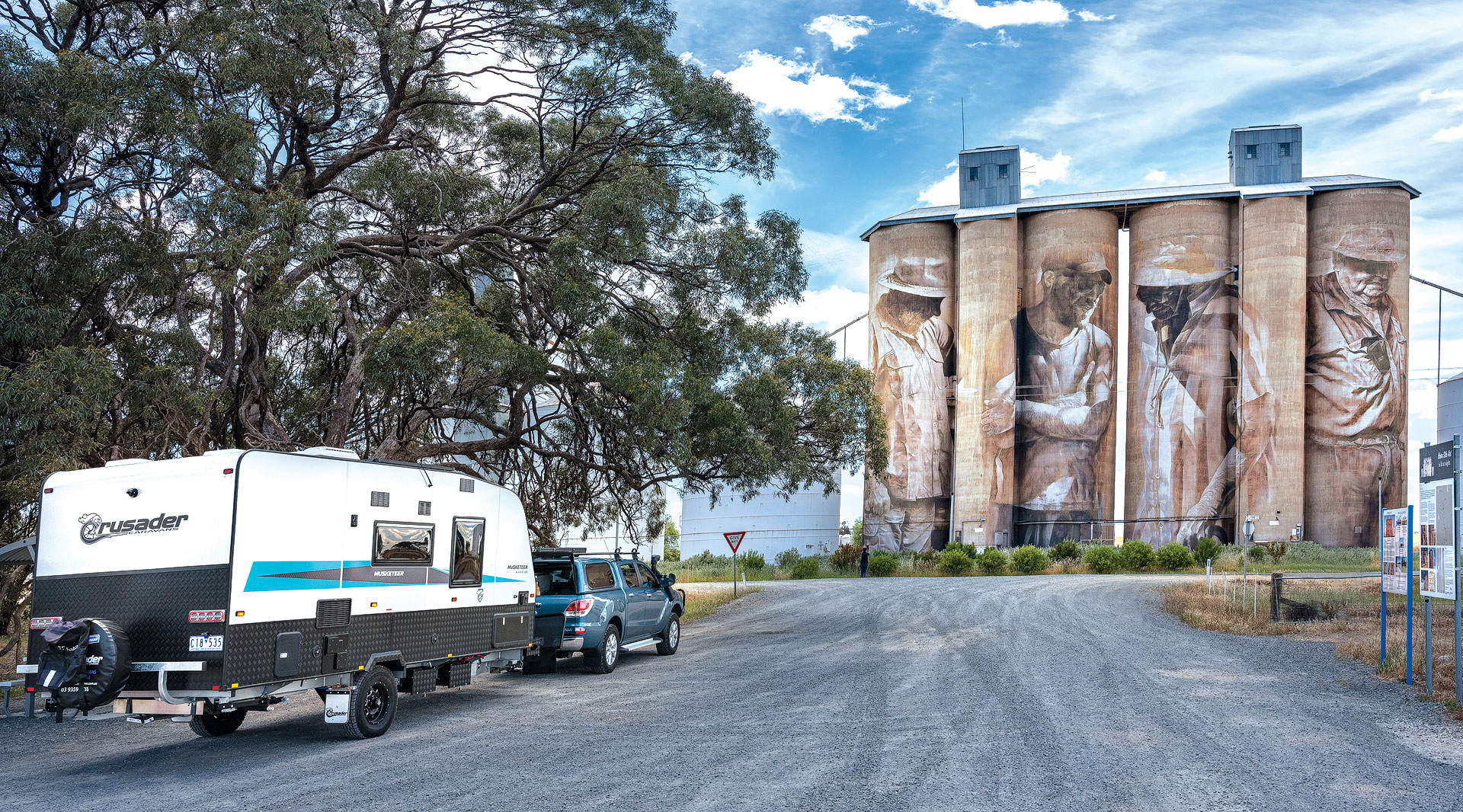
One of those rail sidings, Brim, started it all in 2015 after being painted by Guido Van Helten, a world-renowned street artist. The subjects are anonymous but seek to portray the strength and resilience required by generations of country farmers.
From Brim's silo we faced a decision of whether or not to divert some 100km out of their otherwise northerly route to visit the silos at Albacutya on the edge of the Wyperfeld National Park. These silos, standing alone on a remote railway siding, are eye-catchingly bright and colourful but, painted in a modern style in 2021, they may disappoint those who prefer the more classical portraits featured by other silos. Melbourne artist, Kitt Bennett, seeks to tell the story of growing up in the country.
Sea Lake
Running late for our booking at the Sea Lake Caravan Park we had to bypass the silos at Roseberry, but managed to see those at Lascelles. Painted in 2017 by Melbourne based street artist Rone, the Lascelles silos portray a local couple who are fourth generation wheat farmers.
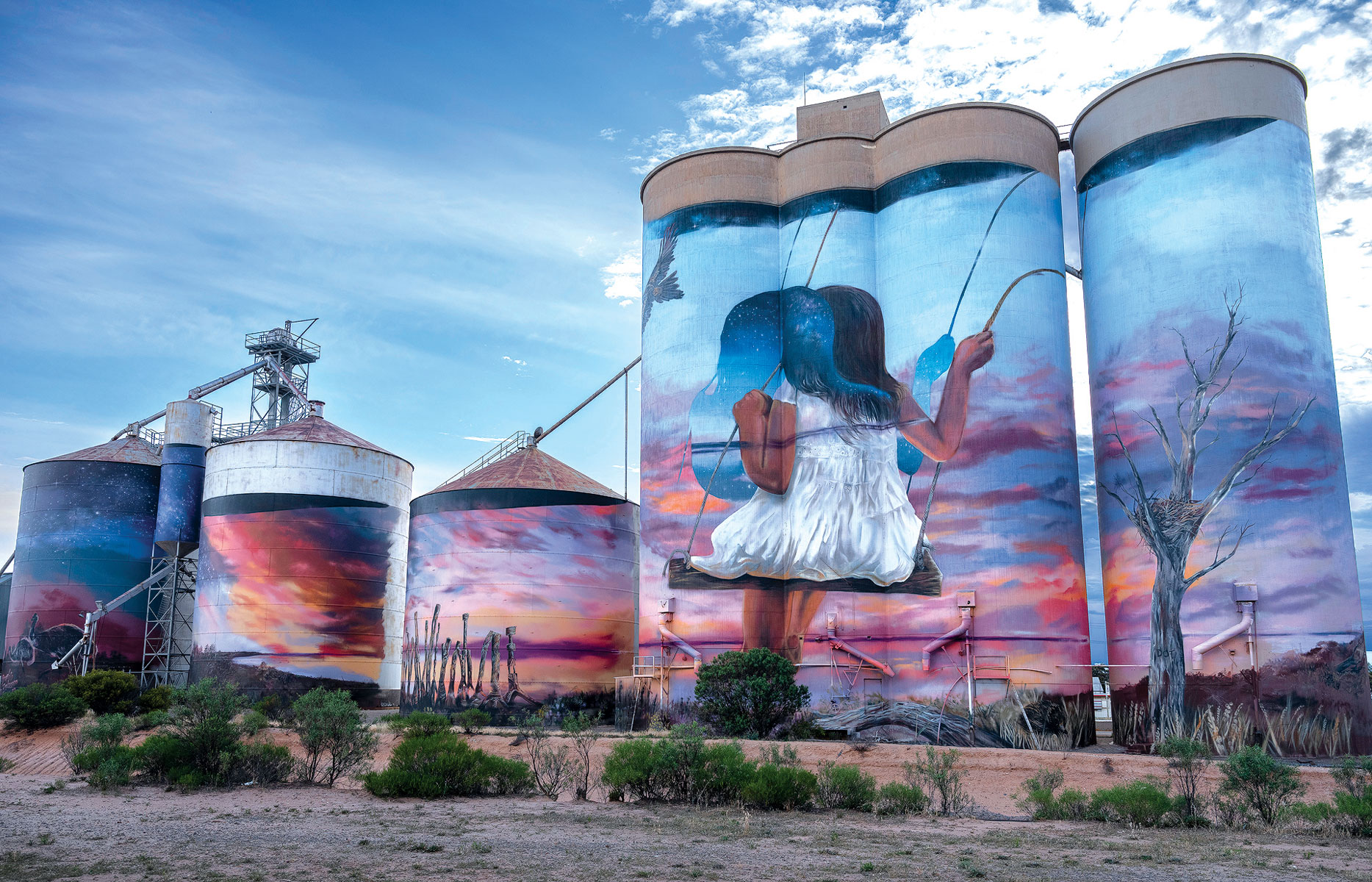
Situated on the Calder Highway halfway between Mildura and Melbourne, the caravan park at Sea Lake was in demand, with limited vacancies for powered sites. Clean and well maintained, guests are (unusually) asked to pay on an honesty system. For those with a fully self-contained van, Green Lake Regional Reserve 10kms to the south, offers free camping as an alternative to the somewhat busy Sea Lake Caravan Park.
Sea Lake is more famous for its (usually) dry salt lake, Lake Tyrrell, than its painted silos and as we approached the town the low clouds took on a distinct pinkish tint from light reflected off the lake. This remnant of a 3-million-year-old, much larger lake has been used to harvest table salt since 1896 and in recent years has become something of a Mecca for international tourists chasing selfies backed by colourful sunsets and sunrises reflected in its mirror-like super-saline water.
While a boardwalk takes visitors a short distance out onto the lake, it is also possible to walk on the lake’s surface which after rain may have a thin covering of super-saline water that can develop an oily consistency as it evaporates.
Sea Lake’s colourful silo artwork was painted by Joel Fergie and Travis Vinson in 2017 and depicts a young indigenous girl enjoying the freedom of playing on a swing under a Mallee tree while contemplating her connection to Country – in this case, Lake Tyrrell.
Patchewollock
Patchewollock, which hosts the northernmost painted silo, involves a round trip of some 140km from Sea Lake. The climate here is drier with outcrops of limestone in the otherwise sandy soil and low Mallee trees have replaced the taller eucalypts seen further south and east. The 2016 silo painting, depicting a local identity chosen for his classic ‘farmer’ appearance, was painted by Brisbane street artist Fintan Magee – sometimes referred to as ‘Australia’s Banksy’.
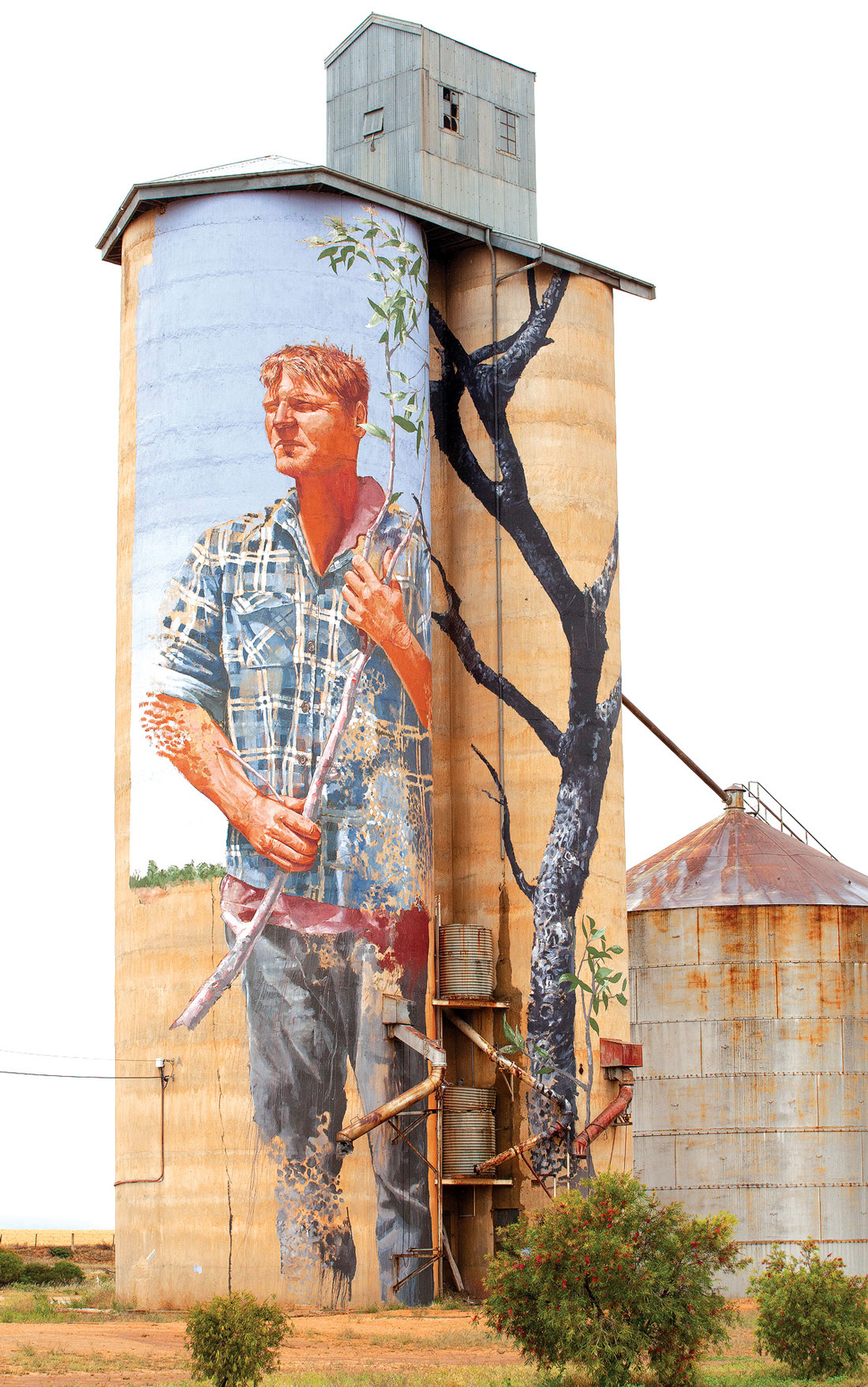
Nullawil
Nullawil, 50km south-east of Sea Lake is another small town that has seen better days, as evidenced by the cafe across the road from its painted silo being boarded up and long vacant. The Nullawil silo is one for the dog lovers. Painted in 2019 by Smug, an Australian-born artist now based in the UK, it explores the bond between a farmer and his Kelpie working dog. The detail, perspective and shading in the painting is especially impressive when you consider the work was painted freehand, largely with aerosol cans.
Rochester
From Nullawil we needed to travel to Rochester 190km in the east to continue our silo tour. We decided to break this journey by spending a couple of nights free camping in the Gunbower State Forest on the banks of the Murray River just outside Koondrook. Set amongst tall eucalypts the flat grassy area at the entrance to the State Forest was a pleasant stay.
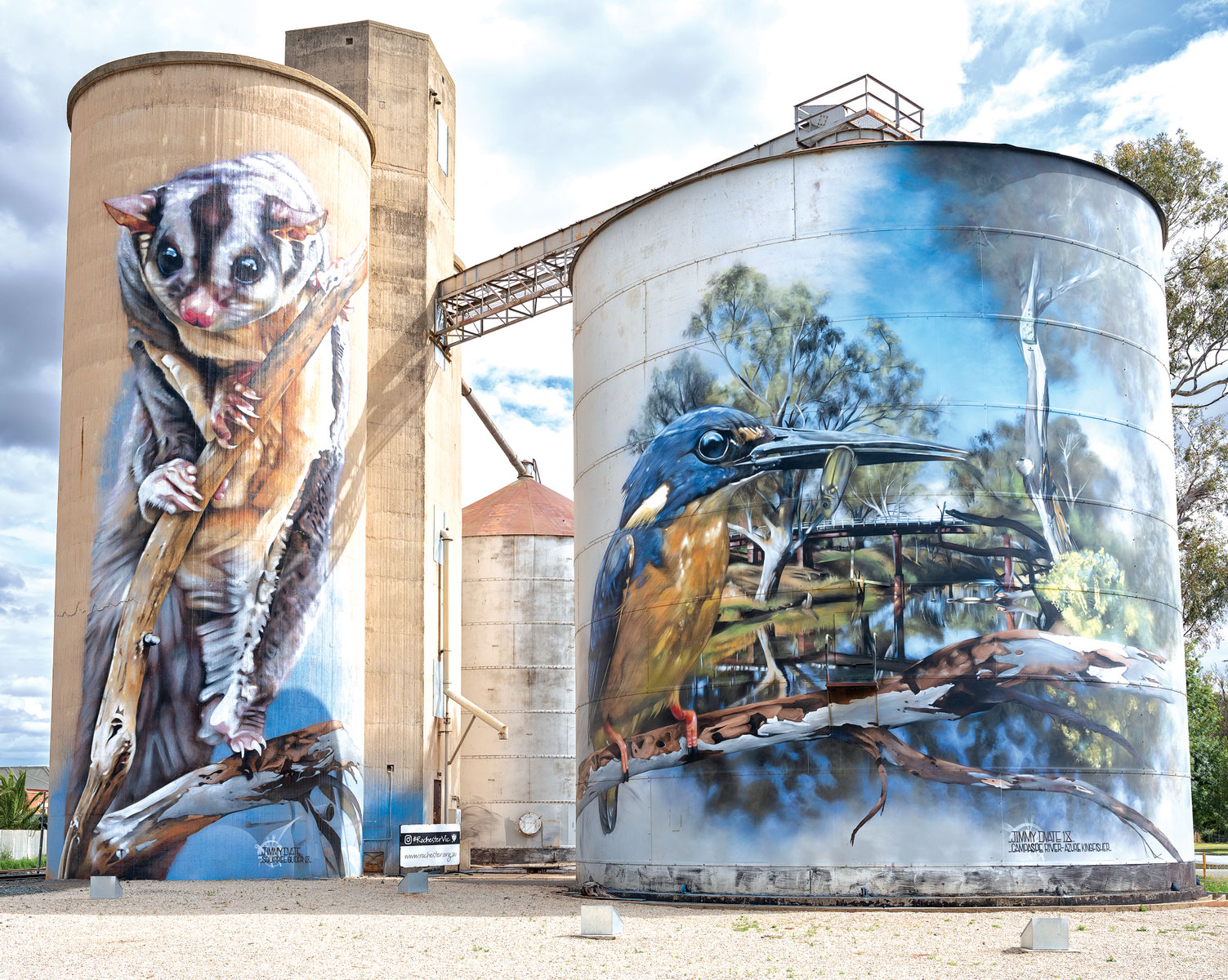
Rochester with its substantial commercial buildings and gentrified houses of last century, gives the impression of a prosperous past. The local caravan park on the banks of the Campaspe River had plenty of vacancies mid-week and with its grassed sites, friendly management and spotlessly clean facilities it had a lot going for it.
The Rochester silos were painted in 2018 by Australian mural artist Jimmy D’Vate whose work often features endangered wildlife – in this instance, a Squirrel Glider, with an adjacent silo featuring an Azure Kingfisher perched on a branch overlooking the Campaspe River.
Tungamah
North-west from Rochester, the sleepy town of Tungamah was the next silo to tick off our list. Well off a main road to anywhere it was interesting to see how, over an hour, just how many people stopped in for a quick photo of this silo. Painted in 2018 by Western Australian street artist, Sobrane Simock, the work features iconic Australian birdlife, including dancing Brolgas. A couple of other murals painted by the same artist can be found around the town, including a pair of blue fairy wrens on the side of a farm shed near the entrance to the town.
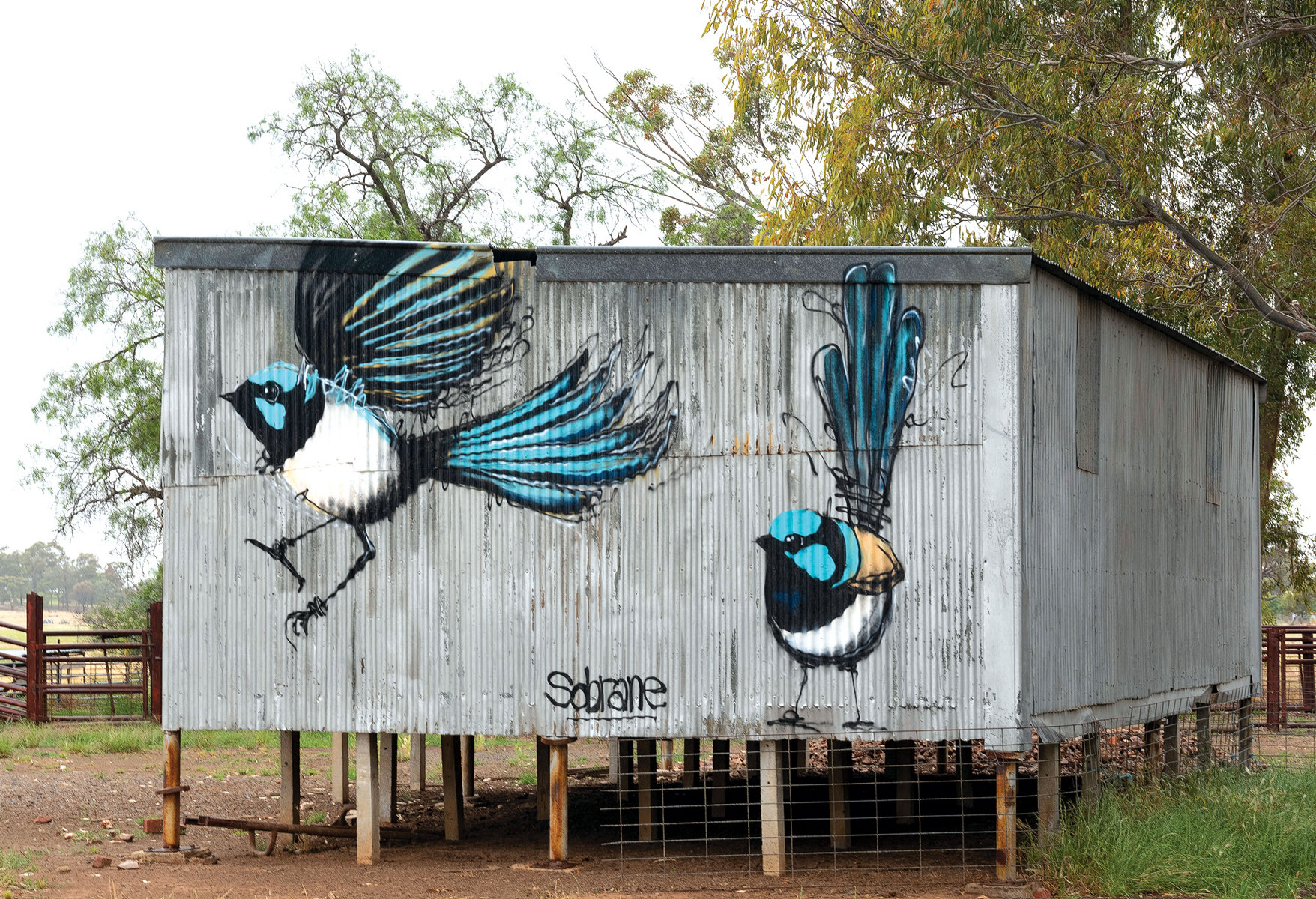
St James
Silos at St James, just down the road from Tungamah were painted by local artist, Tim Bowtel, in 2019. They feature historical images from the town’s past, including George Coles snr whose son went on to found the Coles supermarket empire. While the first GJ Coles store was in the Melbourne suburb of Collingwood, the family began its shopkeeping enterprises in St James when George Coles snr purchased a store there in 1892.
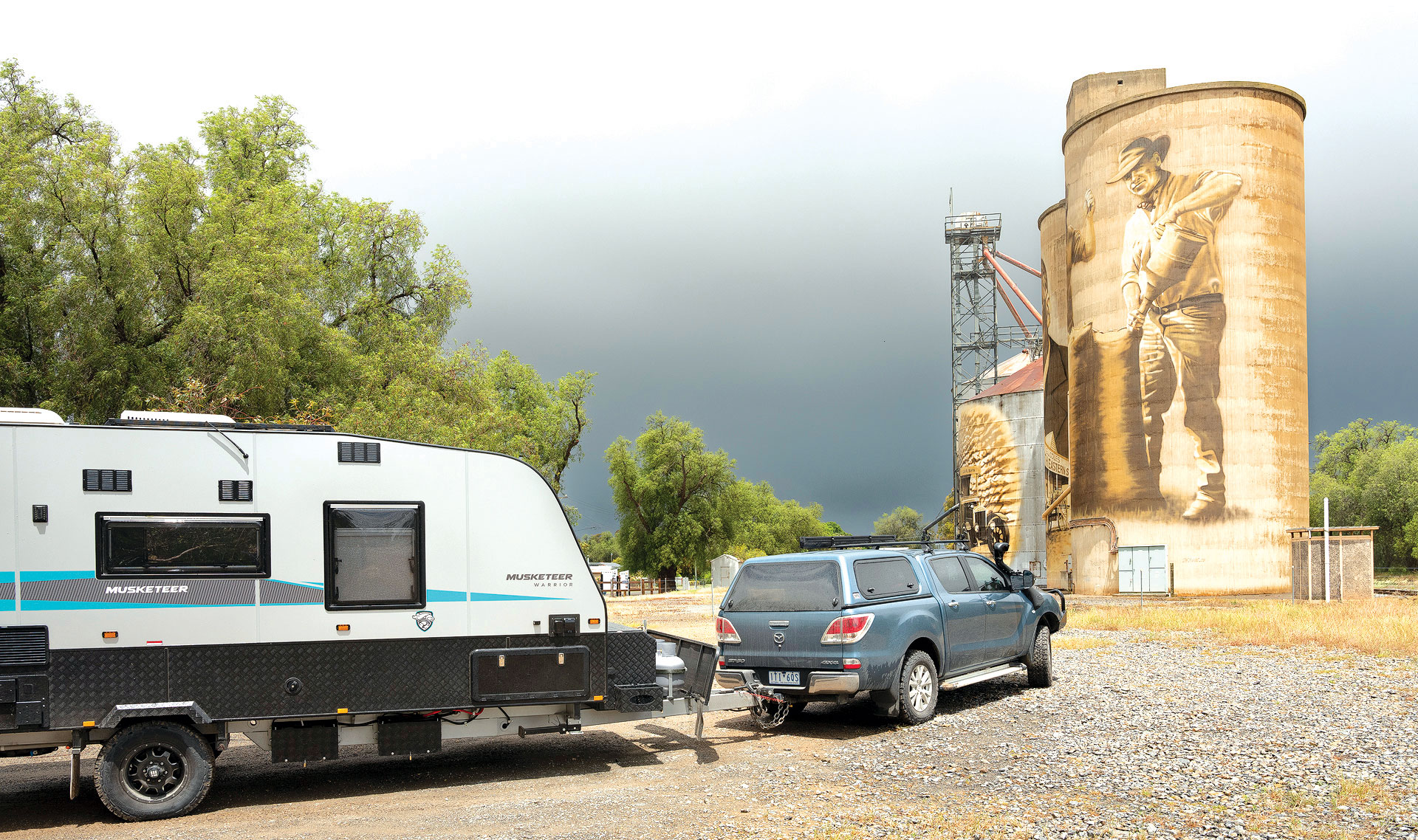
Devenish
Nearby Devenish showcases a silo painted by Melbourne street artist, Cam Scale, in 2019 as a tribute to the Australian Armed forces. Across the road from the silos is the Devenish Railway Hotel which is well worth checking out for a meal or just a Devonshire Tea. For such a small town the pub was doing a roaring trade. While some patrons were locals in for the Sunday roast special, many were tourists drawn there by the silos. Near the hotel was an abandoned building from another era, bearing a barely legible sign, faded by time, that read “Butchers and Bacon Curers” a testimony to the diverse range of businesses these small towns supported in times gone by.
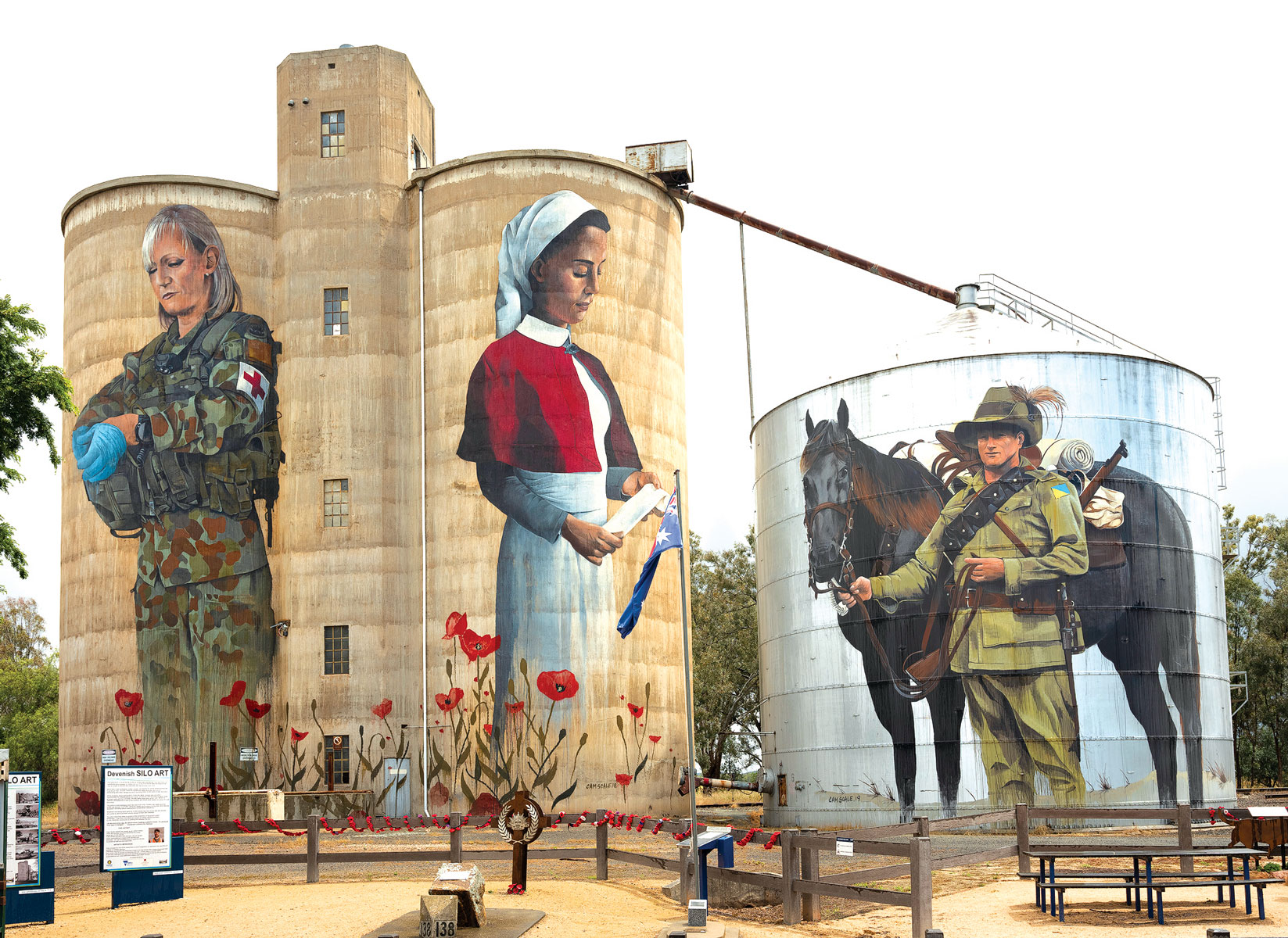
The Penultimate silo on our tour was nearby at Goorambat. Painted by Jimmy D’Vate in 2018 it features the endangered Barking Owl on one side and an impressive trio of local working Clydesdale horses on the other.
Glenrowan
Our final stop for a couple of days was the Glenrowan Caravan Park. Well maintained with a view towards Mt Buffalo in the distance, this small caravan park proved a pleasant enough stay. While there are plenty of things to interest visitors, such as the wineries and restaurants in the King and Ovens Valleys to the east, Glenrowan has sold its soul for the sake of the tourist dollar. The usual small-town businesses such as cafes and a general store have been replaced by shops selling gaudy nick-nacks that only a tourist (and an international one at that) might buy. Great caravan park and interesting sites nearby, but unless you are a Ned Kelly tragic there is little of interest in Glenrowan.
We visited the nearby Winton Wetlands created in 2010 when artificial Lake Mokoan was drained. The Wetlands have a range of bush walks and cycling trails as well as catering for boating and fishing. Also to be found here is a concrete water tank painted by renowned street artist Guido Van Helten featuring the images of three local CFA volunteers. While a far cry from towering wheat silos, the tank was the final artwork on the North East Victoria Silo Art Trail and having travelled some 1,800km circumnavigating Victoria, we felt we needed to visit the Winton tank to complete our journey.
Silo Art Trail attracting tourist
The painted silos are certainly visually impressive and an excellent use of these otherwise drab concrete structures, which in many cases have been decommissioned. I assume the original concept was to attract tourists to small rural towns that are in many cases struggling to survive as their population has gradually migrated to larger centres for employment and the services we have all come to expect in this day and age. Do the tourists bring money to the towns hosting the painted silos? Some I expect, but most of the tourists following the Art Trail seem to simply drive in for a quick snap before just as quickly moving on. However, for anyone with a week to kill, there are worse things to do than a leisurely loop of Victoria visiting the silos and catching up on some of Victoria’s other rural attractions in the process.
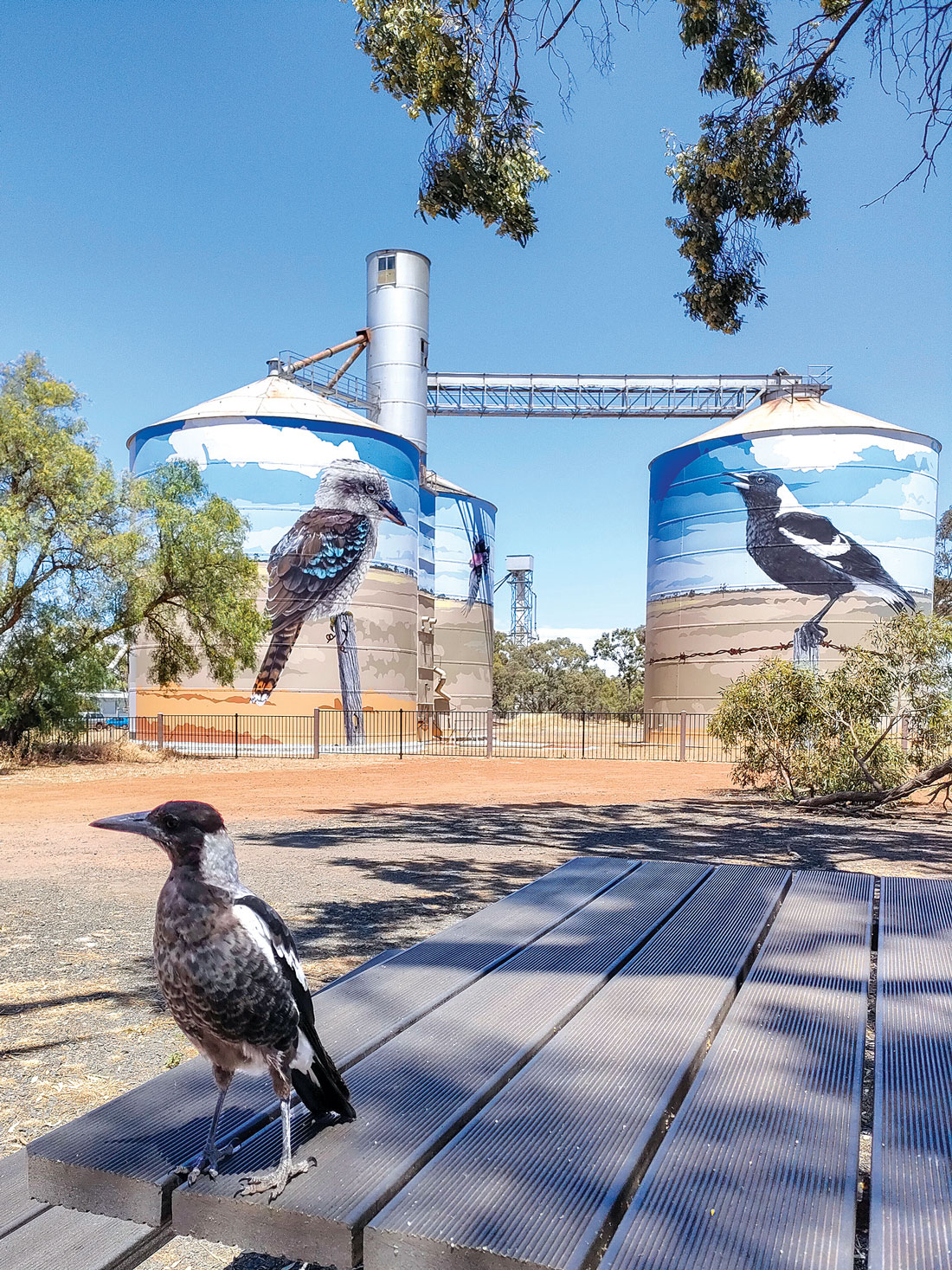
Goroke painted silo with magpie
Western and north-eastern Victoria approximately 1,800kms return from Melbourne.
Note: Not all Victorian painted silos are covered by this article.
When to visit
Any time, but be aware that northern areas of Victoria can experience high temperatures in summer. Lake Tyrell is best seen after recent rain.
Driving conditions
All roads covered were sealed.
Supplies
Small country towns sometimes offer limited opportunities to buy supplies and fuel but 24 hour automated fuel depots can often be found.
Pets
Dogs (on lead) were permitted at all overnight stops.
General Information
North East Art Trail (Website)
Australian Silo Art Trail (Website)







